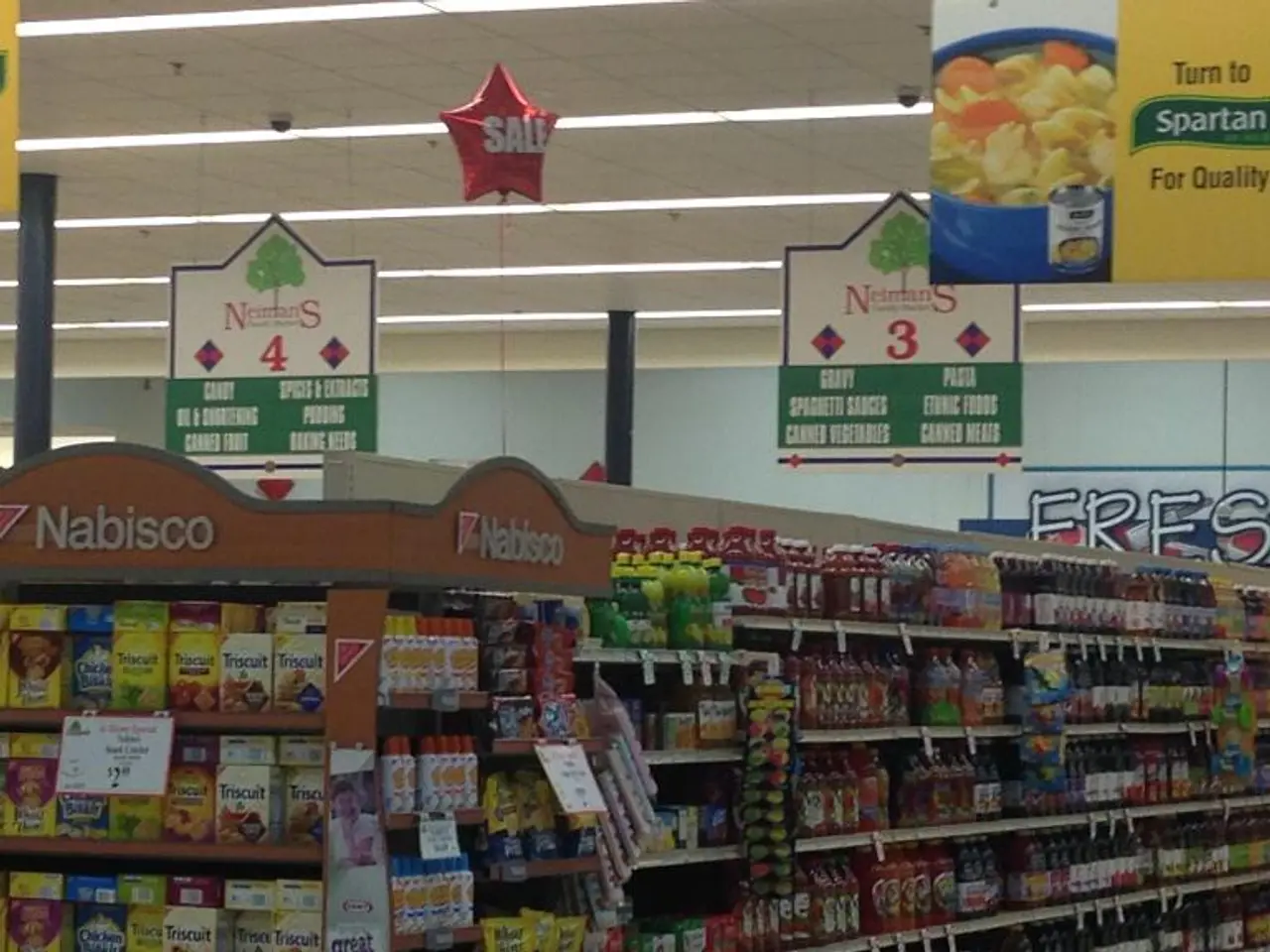1. Altering Business Tactics Through Internet of Things (IoT)
In the rapidly evolving business landscape, the integration of Internet of Things (IoT) technologies is becoming a game-changer for companies aiming to stay ahead of the competition. Early adopters are discovering the benefits of IoT, with the potential to outperform their rivals and retain more satisfied customers.
One innovative approach is the use of beacons in brick-and-mortar stores. By installing these devices around a shop, businesses can offer personalized discounts to customers, enhancing the shopping experience and encouraging customer retention. These discounts are sent directly to a customer's smartphone, either upon entering the store or based on their movement within the location to predict their interests.
Banks are also embracing IoT, with customers now able to enter bank lobbies using their smartphones instead of physical cards. This not only improves security but also offers a more convenient and modern customer experience.
The impact of IoT on businesses is predicted to be significant, with Euromonitor's International Digital Consumer Industry Insights report suggesting that it will have the most impact on businesses in the next five years. IoT devices are already causing disruption in the traditional retail world, with automated checkout systems, location beacons sending discounts, and impressive new mobile applications becoming commonplace.
The success of Amazon Go stores, which use automated checkout technology, has encouraged more retailers to adopt the technology. Smart shelf technology, which uses weight sensors to evaluate inventory and notify management when products need to be replenished, is another innovation transforming the retail sector.
Beyond retail, IoT devices are becoming bridges that connect users with various internet-connected devices through apps. The integration of IoT functionality into Android or iOS apps has become popular, opening new business opportunities in various areas. IoT beacons can be used for location-based marketing, coupons, ads, and mobile payments in the financial industry.
Many companies are actively working on developing strategies involving the extensive use of IoT devices. For instance, Macy's is using IoT technology to offer customers gift codes and prizes through an app, simply by walking into their local store. Kroger, a U.S.-based retailer, has collaborated with Microsoft on IoT-embedded EDGE shelves that monitor inventory, supply price information, track temperature, and share deals of the day with customers.
Mobile payments, enabled by IoT beacons, have the potential to significantly improve the customer experience. By facilitating seamless, contactless transactions, businesses can offer a more efficient and convenient shopping experience, which is particularly important in the current climate.
Artificial intelligence integrated with IoT platforms is also transforming traditional software business models. AI is driving a shift toward "outcomes as a service," where companies pay for measurable results rather than software access. This model aligns compensation with business performance and operational outcomes, such as energy savings or facility management efficiencies.
The widespread expansion of 5G networks underpins IoT growth by providing ultra-fast, low-latency, and more stable connections. This enables real-time data transmission critical for IoT applications across industries, allowing devices to communicate efficiently and support new use cases.
Platforms like Digi X-ON are simplifying the deployment, integration, and scaling of industrial IoT systems by combining hardware, software, and cloud connectivity into a single secure ecosystem. These platforms reduce traditional complexities, accelerating the transition from pilot projects to full production and enabling rapid value delivery across sectors such as industrial automation, smart utilities, and agriculture.
The fusion of AI, IoT, edge computing, and 5G is a key disruptive force, driving innovation in smart devices and networks and driving new revenue models and operational efficiencies. The emphasis on integration, automation, and measurable outcomes is redefining how companies leverage IoT for competitive advantage.
In conclusion, the integration of IoT technologies is reshaping business strategies worldwide, offering numerous opportunities for businesses to optimize operations, create new service models, and enhance customer experiences. The future of business lies in leveraging these technologies to stay competitive and meet the evolving needs of consumers.
[1] IoT Agenda. (2021). IoT and AI: How AI-enabled IoT platforms are transforming business. [online] Available at: https://www.iotagenda.com/ai-iot/ai-enabled-iot-platforms-transforming-business-58331668 [Accessed 11 Apr. 2021]. [2] IoT for All. (2021). Digi X-ON: Simplifying Industrial IoT Deployment. [online] Available at: https://www.iotforall.com/digi-x-on-simplifying-industrial-iot-deployment/ [Accessed 11 Apr. 2021]. [3] IoT for All. (2021). 5G and IoT: The Impact of 5G on IoT Applications. [online] Available at: https://www.iotforall.com/5g-and-iot-impact-5g-on-iot-applications/ [Accessed 11 Apr. 2021]. [4] IoT for All. (2021). Edge Computing and IoT: The Role of Edge Computing in IoT. [online] Available at: https://www.iotforall.com/edge-computing-and-iot-role-of-edge-computing-in-iot/ [Accessed 11 Apr. 2021].
- As the retail industry evolves, mobile payments enabled by IoT beacons are becoming crucial for offering seamless, contactless transactions, improving customer experience and efficiency.
- In the financial sector, IoT beacons can be utilized for location-based marketing, coupons, ads, and mobile payments, opening new business opportunities and transforming consumer experiences.
- The integration of AI with IoT platforms is driving a shift towards "outcomes as a service," where companies pay for measurable results instead of software access, aligning compensation with business performance and operational outcomes.
- The advent of 5G networks has a significant impact on the growth of IoT, providing ultra-fast, low-latency, and stable connections, essential for real-time data transmission critical for various IoT applications.




